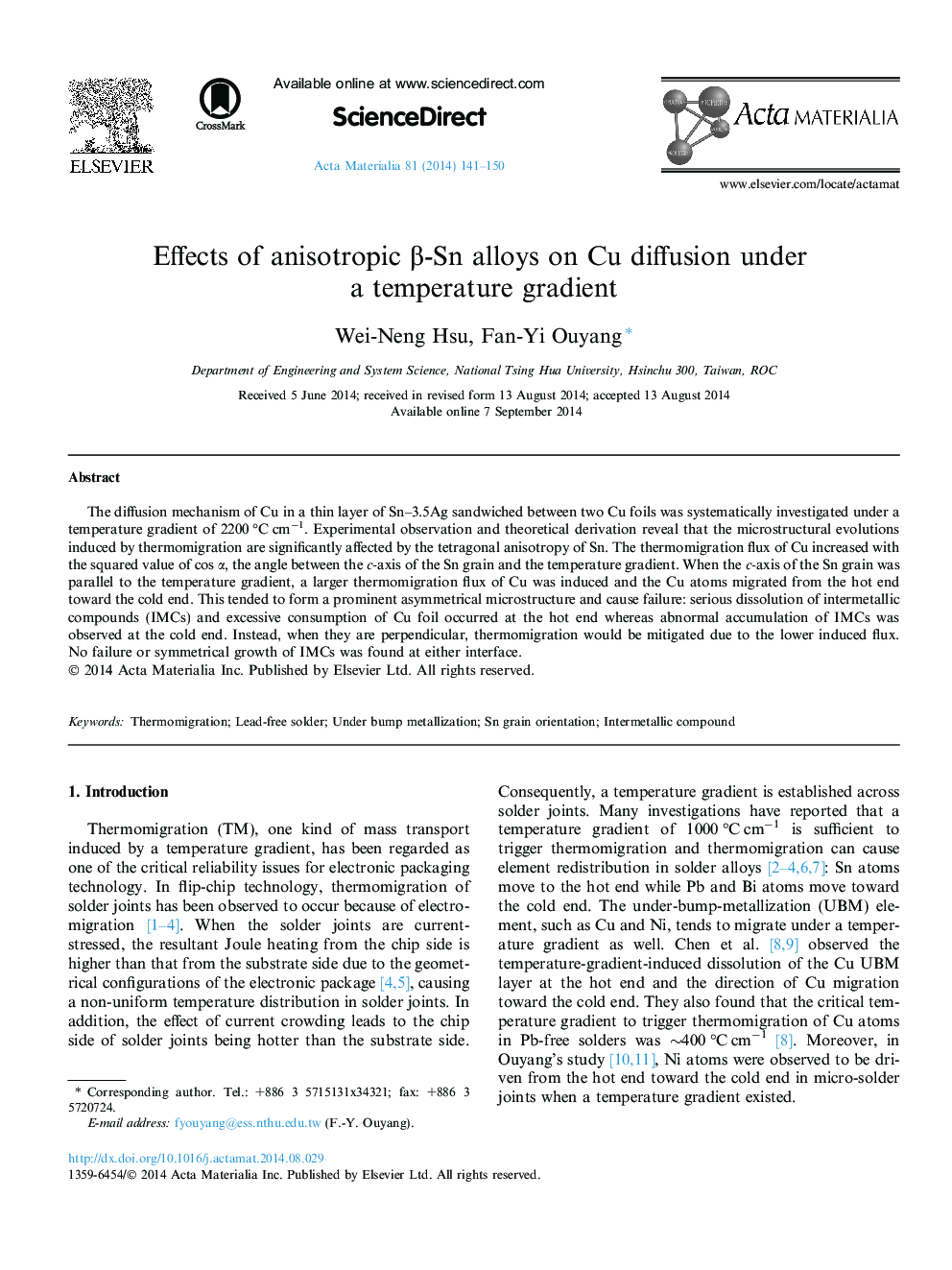| Article ID | Journal | Published Year | Pages | File Type |
|---|---|---|---|---|
| 1445605 | Acta Materialia | 2014 | 10 Pages |
The diffusion mechanism of Cu in a thin layer of Sn–3.5Ag sandwiched between two Cu foils was systematically investigated under a temperature gradient of 2200 °C cm−1. Experimental observation and theoretical derivation reveal that the microstructural evolutions induced by thermomigration are significantly affected by the tetragonal anisotropy of Sn. The thermomigration flux of Cu increased with the squared value of cos α, the angle between the c-axis of the Sn grain and the temperature gradient. When the c-axis of the Sn grain was parallel to the temperature gradient, a larger thermomigration flux of Cu was induced and the Cu atoms migrated from the hot end toward the cold end. This tended to form a prominent asymmetrical microstructure and cause failure: serious dissolution of intermetallic compounds (IMCs) and excessive consumption of Cu foil occurred at the hot end whereas abnormal accumulation of IMCs was observed at the cold end. Instead, when they are perpendicular, thermomigration would be mitigated due to the lower induced flux. No failure or symmetrical growth of IMCs was found at either interface.
